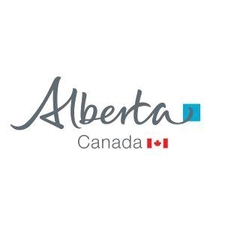CALGARY
Type of resources
Topics
Keywords
Contact for the resource
Provided by
Formats
Representation types
Update frequencies
status
-

This GIS dataset is a compilation of existing surficial map information for the Calgary-Lethbridge Corridor area tiled into one layer. It is suitable for presentation and use at 1:250 000 scale. The dataset was prepared by appending existing GIS datasets into one layer with a standard attribute table. These datasets were then compared against surficial maps for which GIS data were unavailable. Lastly, polygon boundaries were modified to agree with the surface topography as represented by a digital elevation model (DEM) with a grid cell size of 25 metres. Data sources included published Alberta Geological Survey and Geological Survey of Canada maps and the Agricultural Regions of Alberta Soil Inventory Database Version 4.0. Legend information for each polygon was translated by the author into the standard schema. This dataset contains the polygon features of Alberta Geological Survey Map 579, Surficial Geology of the Calgary-Lethbridge Corridor, and has been exported in shapefile format for public distribution.
-

This is a GIS dataset containing digitized and attributed line features from scanned Alberta Geological Survey Maps 201, 202, 203 and 204. The data show the surficial geology (linear landforms) of the Calgary urban area (NTS areas 82O/01, 82P/04, 82J/16 and 82I/13). Features shown on the maps include fresh and buried scarps, minor traverse ridges, streamlined glacial landforms and buried valleys . The data from the four maps are presented in a single line layer.
-

This is a GIS dataset containing digitized and attributed polygon features from scanned Alberta Geological Survey Maps 201, 202, 203 and 204. The data show the supplemental surficial geology of the Calgary urban area (NTS areas 82O/01, 82P/04, 82J/16 and 82I/13). Polygons, representing a discontinuous layer, are attributed as sand and silt veneer or buried sand, as shown on the maps. The data from the four maps are presented in a single polygon layer.
-

This GIS dataset portrays the distribution of glacial landforms within the Calgary-Lethbridge Corridor area, based on the compilation of existing government survey mapping and research literature, supplemented by new analysis of remote sensing data. The original line features have been modified where necessary for map production at 1:250 000 scale. This dataset contains the line features of Alberta Geological Survey Map 579, Surficial Geology of the Calgary-Lethbridge Corridor, and has been exported in a shapefile format for public distribution.
-

This GIS dataset depicts an estimate of average annual groundwater recharge in the Edmonton-Calgary corridor based on hydrological water budget analysis using climate and hydrometric data from Environment Canada, the Water Survey of Canada, and Alberta Environment and Sustainable Resource Development. This average annual groundwater recharge grid was generated to assist in building steady-state numerical groundwater flow models for large regions within the Edmonton-Calgary Corridor.
-

This GIS dataset depicts the drift thickness in the Edmonton-Calgary corridor based on water-well litholog data and bedrock outcrop locations. We used well data from an internal Edmonton-Calgary corridor geological mapping database. This thickness map was generated to assist in building a geological model for the region. The sediment thickness was generated by subtracting the bedrock topography surface from the 60 m Shuttle Radar Topography Mission v. 2 digital elevation model.
-

This is a GIS dataset containing digitized and attributed polygon features from scanned Alberta Geological Survey Maps 201, 202, 203 and 204. The data show the surficial geology of the Calgary urban area (NTS areas 82O/01, 82P/04, 82J/16 and 82I/13) and are attributed with stratigraphic unit, lithology, lithogenesis, morphology, veneer material and the unit labels as shown on the maps. The data from the four maps are presented in a single polygon layer.
-

This GIS dataset depicts the structural bedrock top surface in the Edmonton-Calgary Corridor based on water-well litholog data, including bedrock outcrop locations. We sourced the well data from an internal Edmonton-Calgary Corridor geological mapping database. This surface provides a geological model for the region. These data comprise the raster surface of Alberta Geological Survey Map 549, Bedrock Topography of the Edmonton-Calgary Corridor, Alberta.
-

This is a GIS dataset containing digitized and attributed line features from scanned Alberta Geological Survey Maps 201, 202, 203 and 204. The data show the surficial geology of the Calgary urban area (NTS areas 82O/01, 82P/04, 82J/16 and 82I/13) and are attributed with geological contact boundaries defined and inferred as shown on the maps. The data from the four maps are presented in a single line layer.
 Arctic SDI catalogue
Arctic SDI catalogue